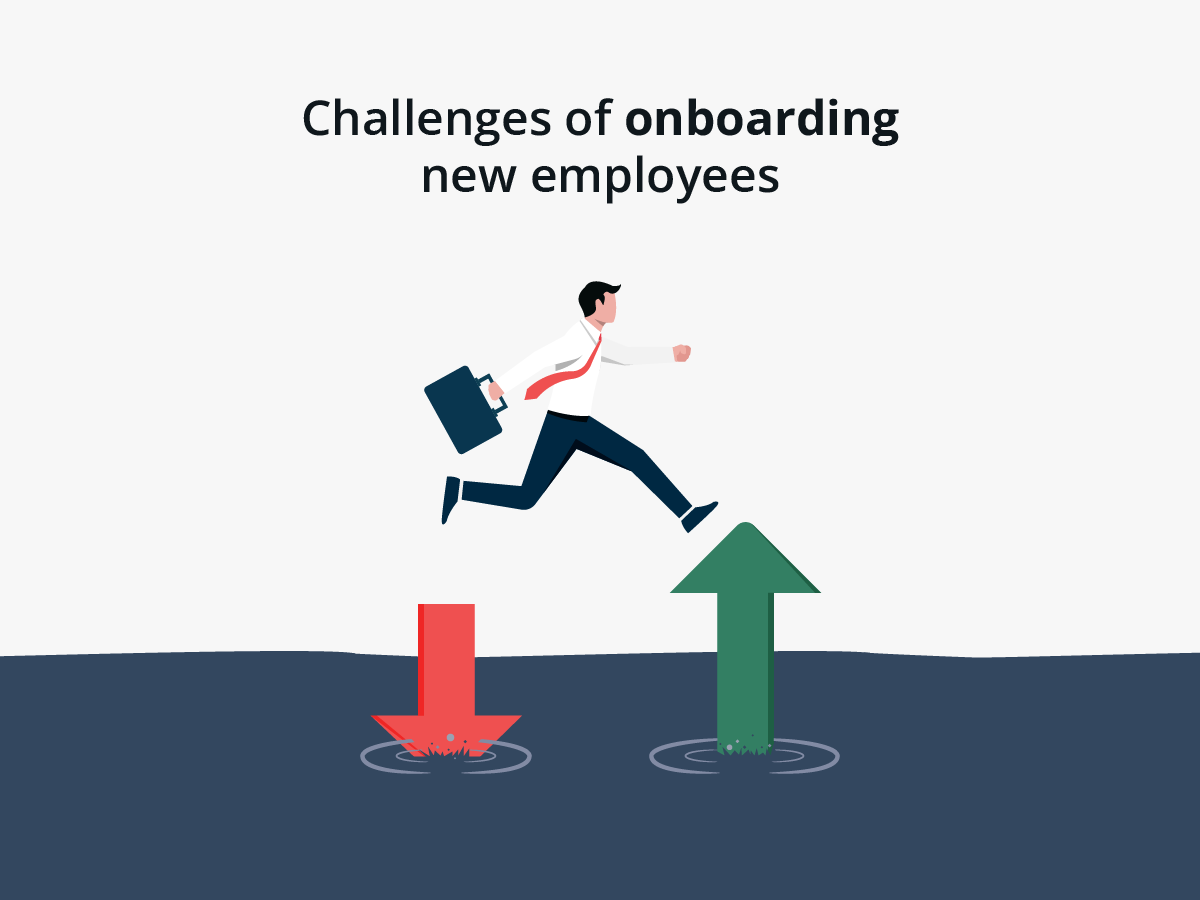
According to the Research by Brandon Hall Group organizations with a strong onboarding process improve new hire retention by 82% and productivity by over 70%. This shows onboarding is as crucial as the recruitment process. In the end, any successful recruitment will not be successful if onboarding procedures are not in good shape.
A good onboarding process is the second step (after the selection process) to direct teams to achieve company goals by adapting employees to the organization. This happens because it is something that creates a sense of involvement and belonging after onboarding, which is related to the degree of commitment and performance that this new employee will have in their new position.
Top employee Onboarding challenges
-
Failure to understand individual responsibilities
It is ubiquitous to hear that during onboarding, many new employees lack clarity of their roles & responsibilities. They usually think that the job role described during the recruiting process differs from what they are doing in the organization.
In the long run, this creates a big problem within the organization because there is a failure to understand individual responsibilities. It puts the new employee in a dilemma and could be disappointed by the assigned role.
Therefore, when there is constant communication, regular 1:1s, and clarity of tasks to be performed is there, this does not happen. It’s a two-way street: the sooner you start talking about expectations, the sooner you’ll find yourself in a position of trust and open communication. -
Lack of goal setting
A staggering 60% of companies report not setting short-term goals for new employees.
Onboarding fails when employees don’t know the company’s collective and individual goals that are expected to achieve the common goals.
Giving new hires clear goals is another powerful strategy because it allows them to share realistic expectations about their day-to-day work. And the employees who have clarity on how their work fits into the company’s bigger picture tend to be more accountable and perform 2x better than before after the onboarding process is complete.
Ways to solve onboarding challenges
-
Offering real-time training
Research shows that it typically takes eight months for new joinees to reach their maximum level of productivity. How to speed it up?
At Amoga, we simplify work by breaking big, complicated tasks into simple atomic tasks along with the process guides (Instructions, training material) for each sub-task. Ultimately, this process guide acts as a guidebook for employees through which new hires can start performing instantly from the day of onboarding.
Providing this kind of real-time training along with work simplification makes them feel more confident and able to manage change, resulting in a more positive and open acceptance of the change. Another crucial aspect to remember is focusing on employee growth and progression that is evident to them, even during change. -
Motivating new joiners
Companies must generate enthusiasm in the new hires by gamifying day-to-day tasks. By gamifying work and transforming the work environment into a growth-culture boosts employee engagement and keeps them motivated in the workplace. Amoga gamifies work by presenting work and growth progression in levels. This brings curiosity and desire in employees to achieve/conquer and keeps them motivated in their work and the workplace.
Also, not to forget the scorecard. Scorecard gives employees a clear path to success. Through the real-time scorecard, managers/team leads can gauge employees’ performance – who’s on track and who needs guidance and training as we present a system of accountability. -
Eliminate the hassle with a productivity-focused digital tool
Always being aware of the problems mentioned in the post is crucial to keep the professional environment more productive. You can take the help of Amoga – an agile low-code platform for the same. It can improve the onboarding process and automate routines and processes, better control the progress of projects and facilitate the delegation of tasks to the professional team.

